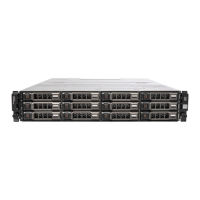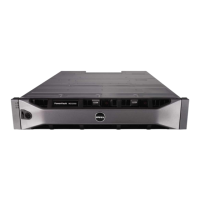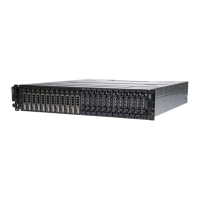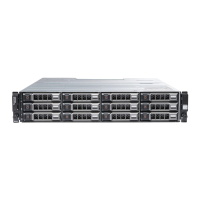Preparing Your Systems for Clustering 51
2
Click
Next
. The
Disk Group Name and Physical Disk Selection
window is
displayed.
3
Type a name (up to 30 characters) for the disk group in
Disk Group Name
field.
4
Select the appropriate configuration method of Physical Disk selection
from the following:
– Automatic (see step 6)
– Manual (see step 7)
5
Click
Next
.
6
For automatic configuration, the
RAID Level and Capacity
window is
displayed.
a
Select the appropriate RAID level in the
Select RAIDl Level
field. You
can select RAID levels 0, 1/10, 6, and 5. Depending on your RAID level
selection, the physical disks available for the selected RAID level is
displayed in the
Select Capacity
table.
b
In the
Select Capacity
table, select the relevant disk group capacity
and click
Finish
.
7
For manual configuration, the
Manual Physical Disk Selection
window is
displayed.
a
Select the appropriate RAID level in Select RAID level. You can select
RAID levels 0, 1/10, 6, and 5. Depending on your RAID level selection,
the physical disks available for the selected RAID level is displayed in
Unselected Physical Disks
table.
b
In the
Unselected Physical Disks
table, select the appropriate physical
disks and click
Add
.
NOTE: You can select multiple physical disks at the same time by holding <Ctrl> or
<Shift> and selecting additional physical disks.
8
Click
Calculate Capacity
to view the capacity of the new disk group.
9
Click
Finish
. A message is displayed confirming that the disk group is
successfully created and that you must create at least one virtual disk
before you can use the capacity of the new disk group.
To create virtual disks:
1
Choose one of these methods to start the
Create Virtual Disk Wizard
:
book.book Page 51 Monday, June 21, 2010 1:45 PM

